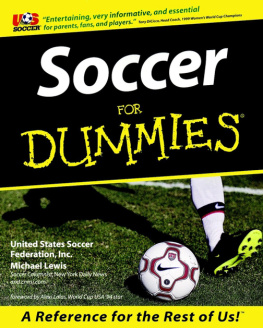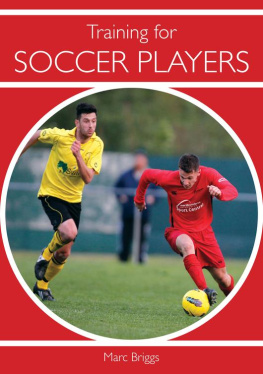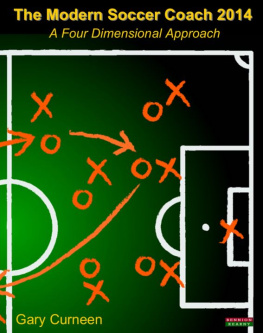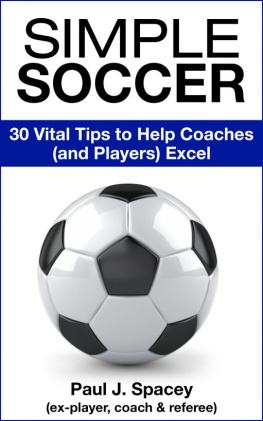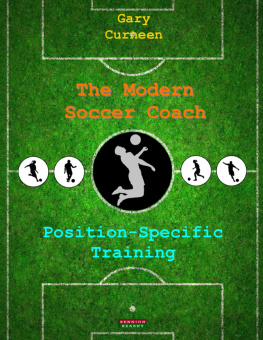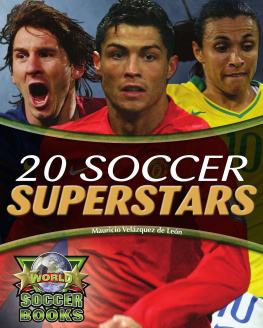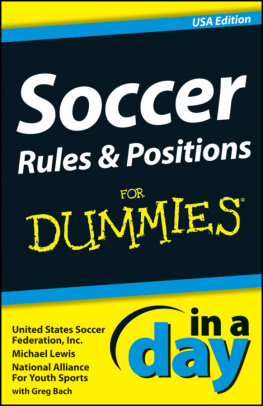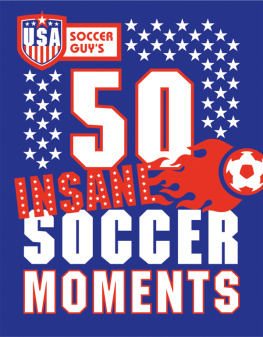Soccer iQ
Volume 2
By Dan Blank
Copyright 2013
All rights reserved.
I invite you to read my blog at www.soccerpoet.com and to follow me on Twitter: @SoccerPoet
If you would like to place a bulk order of this book in paperback at a discounted price, please email me at .
Table of Contents
Introduction
What did I forget? What did I forget?
That tortured phrase echoed through my head as I deliberated whether or not to push the little button that would officially turn Soccer iQ the Word document into Soccer iQ the book. My hand cupped the computer mouse as my index finger tickled the left-click trigger. I stared at the screen for ten minutes, then fifteen, then twenty. This was a big step huge really and I didnt want to get it wrong. It was my first book and I wanted to knock it out of the park! I had reached the proverbial point of no return and the one thing I desperately didnt want was to take that leap only to realize a day later that I had left a really great concept out of the text. Man that would completely stink!
Well, it didnt take a day. Not even close. Fifteen minutes after Soccer iQ was on its way to the printed page, I realized that there was a wonderful chapter that had not occurred to me until it was too late. I jotted it down and labeled it as the first topic of a potential Volume 2. The chapter is called Plan B, and youll be reading it a few pages from now.
With each passing week Id think of another concept that should have been included in Soccer iQ until eventually I had compiled enough of those chapters to justify the release of Soccer iQ Volume 2. And here we are.
If youre reading this book, then youve probably also read Soccer iQ Volume 1. Thank you for that! Thank you for making it the best-selling soccer book on Amazon! Im certain that in Mercer County, NJ, many a fine, high school English teacher dropped dead on the spot when they heard the news.
I promised myself that I wouldnt release a Volume 2 unless I cultivated enough quality content to truly justify its existence. I wasnt going to throw together some rubbish and hope that the second volume would ride the coattails of the first just so I could make a buck. If I was going to put out a sequel, I would only do it with a clear conscience. The question I asked myself was this: If Volume 1 never existed, would this book be good enough to stand on its own?
I believe it would.
I hope youll agree. And if you dont, Ill at least hope that by the time you finish, youll feel that youve gotten more than your moneys worth.
What I said in the introduction of Volume 1 still holds true: For this book to make a difference, you have to believe that the little things really do matter and that even one of them is enough to win or lose you a game.
Welcome to more of your Soccer iQ
1
Meet Your Teammates
Did your whole team buy this book? If so, let me recommend that you all sit down and read this chapter together and then have a quick discussion about how it applies to your team. I guarantee that it will have an immediate and positive impact on your game day performances, and the whole thing shouldnt take you more than 20 minutes.
Soccer passes are not a one-size-fits-all proposition. Your team is a collection of individuals. Each player brings to the table a different set of strengths and weaknesses. A simple inventory of those characteristics needs to be applied during the course of a match. It only makes sense that whenever possible, you put your teammates in the best possible situation to be successful. Probably or at least hopefully, you already try to play to your own strengths; now lets try doing that for your teammates also.
You see Jennifer over there? Yeah, shes great on the ball, but shes no track star. As a matter of fact, shes a little on the slow side. Lets try to keep her out of footraces by playing the ball to her feet. She can do amazing things on the ball, but only if she can get to it.
Ashley on the other hand, well, she can fly! We want her in footraces! If she wants the ball in behind the defense, put it out in front of her and let her run!
Yes, Ashley is lightning fast, but shes also pretty darn short and hasnt won a header in three years. So lets not play the ball to her head unless we have no choice.
Becky however, shes about two inches taller than any of their defenders and shes an excellent header, so when we get into a crossing situation, lets put it up in the air and let her go get it. But if youre going to pass it to her on the ground, make sure you play it to her right foot because her left foot is horrible!
And speaking of Becky and her left foot if Becky is about to cross the ball from the left wing, we know that ball probably wont reach the back post, so wed better make sure we have at least one runner getting to the near post because thats where the ball is going to land.
Now our right back, Carli, shes a fantastic 1v1 defender, but she doesnt have the worlds strongest leg, so theres no point in asking her to hit a 50-yard ball. As a matter of fact, since a lot of her clearances are rather short, our forwards need to drop deeper to help her out when she has to clear the ball.
By now youve probably already started transposing the descriptions of my imaginary players onto your own teammates. Excellent! Thats exactly what you should be doing!
If youre in a fantastic position to score a goal, do you want the ball passed to your right foot or your left? You may be so good with either foot that you really dont care, but I assure you, you are part of a very small minority. If you prefer one foot to the other, doesnt it stand to reason that your teammates may feel the same way? Of course it does!
These are the tiny considerations that smart players are constantly making. You know your teammates way better than I do. Youve been with them for a while now. You can probably tell me which players are the fastest, the slowest and the best or worst headers. You can probably tell me who is right-footed and who is left-footed. Now, since you know all these things, why not apply that knowledge in the best possible way to give your teammates the best possible chance to be successful and give your team the best possible chance to win?
Years ago I was the assistant coach for a W-League team. The roster was sprinkled with some exceptional Division I college players, but not everyone could make it to our first few training sessions. Going into our first game, some of our players still hadnt even met yet.
As we headed into the stadium, I overheard two of our forwards introducing themselves for the first time. The conversation went like this:
Hi Jen, Im Nikki.
Nice to meet you.
Where do you want the ball? Do you want it to your feet or in space?
I want it at my feet.
Okay, Im fast, so play me into space.
That conversation took all of ten seconds, yet it accomplished something very important: it determined what type of pass each player needed so that she could be the most successful. It takes some players half a season to figure that out, but these two got it sorted out ten seconds after they met. Doesnt that make a lot more sense?
Smart players give their teammates the best possible chance to be successful by recognizing their strengths and weaknesses and making the necessary adjustments.
Note for Coaches: Remember that suggestion I made in the first paragraph? Yeah not kidding. Put your team in a room and have them figure out their teammates strengths and weaknesses and how they can adjust to them. Your chances for success are much higher when players are maximizing their strengths and accommodating for their weaknesses.


